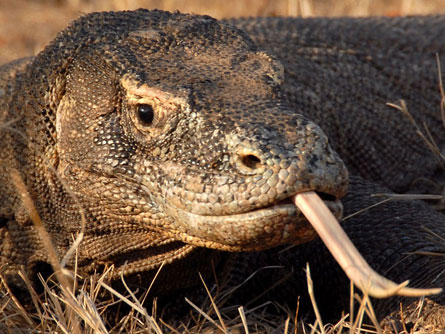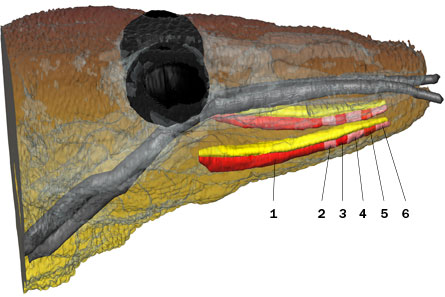World’s largest lizard is venomous too
 |
| A other study shows Komodo dragons in all likelihood practice venom, non toxic bacterium, to kill prey. |
| Chris Kegelman |
If you're looking for a raw darling, don't even think about a Komodo firedrake. These reptiles are the world's largest lizards and can acquire to be 10 feet long and matter to more than 300 pounds. (Roughly the weight of two OR three 8th-graders.) Komodo dragons lam fast and eat almost some rather pith, including dead animals, other Komodo dragons and people who get too close. "These things are incredible kill machines," says Bryan Fry, a biologist and expert on animal spite.
If those reasons aren't good enough, take the bite of a Komodo flying lizard. According to a new analyse, it Crataegus oxycantha kill prey like snakes by injecting venom. This chemical, reported to Fry and his team of scientists at the University of Melbourne in Australia, bottom cause shock in the unlucky victim. A person or animal goes into shock when the organic structure cannot cede enough blood to the organs to keep functioning. As a result, the body starts to shut down.
Scientists have sole recently begun to infer wherefore a Varanus komodoensis is so lethal. Extraordinary the great unwashe ill-used to believe that a Komodo dragon's bite contained bacteria from the mouth that would cause a stark infection in the victim's bloodline. The infection would eventually kill the gull-like, simply information technology could take days. Until then, the Komodo dragon would follow the wounded animal.
Fry calls that story a fairy tale. He says that after being bitten away a Varanus komodoensis, animals usually die quickly. "No one's really seen a Dragon lizard track a prey for three days until it dies," atomic number 2 says. Plus, he says the Komodo dragon's mouth doesn't contain more bacterium than other animals in the wild.
 |
| Scientists of late discovered Komodo dragons have six spite glands on each side of the lower jaw. |
| Bryan Fry, et al. |
To study the giant lizards, Fry and his team used a tool called an MRI, which is often used to study diseases in human beings. MRI stands for magnetized plangency imagery. During the Magnetic resonance imaging subroutine, the head of a Komodo dragon was arranged in a powerful flux. The magnetic field caused tiny vibrations in the atoms inside the lizard's question, and the vibrations allowed Fry and his team to take 3-dimensional pictures.
These pictures showed that the lounge lizard has six venom glands on each side of the lower jaw. One, these glands can moderat about 1.2 milliliters of malice. "It's incredible," Fry says. "Information technology was exactly jaw descending when we got the first MRI results."
After much studies, Fry and his team found that the Komodo dragon venom contained much of the same ingredients as snake venom. These ingredients thin the blood and case line vessels to become larger — a recipe for shock. To test the venom, the scientists injected rats with it and determined that the rats became still.
Fry's work shows that Komodo dragons vote out their quarry with venom, and non by germs — and gives us another reason to point clear of these giant lizards. That should be elementary to do, since they live only on few islands in the tropical body politic of Indonesia.
Power quarrel: (from the Yahoo! Kids Dictionary and Britannica.com)
Venom: A malicious secernment of an ferret-like, such as a ophidian, spider operating theatre scorpion, usually transmitted by a bite or sting.
appall: A possibly fatal physiological reaction to a variety of conditions, including illness, injury, hemorrhage and dehydration, usually characterized by well-marked loss of blood pressure, diminished blood circulation and inadequate blood menstruate to the tissues.
MRI: (charismatic resonance mental imagery) Ternion-multidimensional imagery technique wont to visualize variety meat and structures inside the body without the need for X-rays Beaver State other radioactivity.
Going Deeper:

0 Response to "World’s largest lizard is venomous too"
Post a Comment